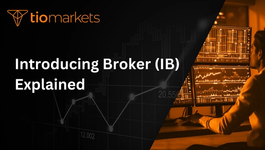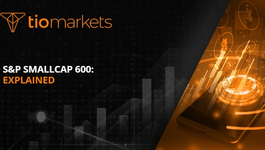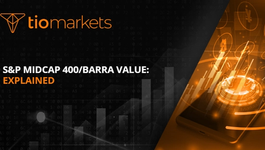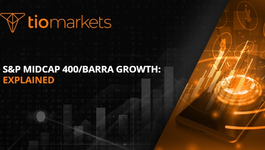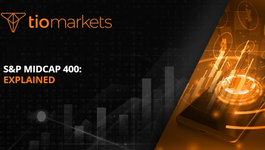Goldman Sachs asset management factor model: Explained
BY TIOmarkets
|July 27, 2024The Goldman Sachs Asset Management (GSAM) factor model is an integral part of the financial world. It is a sophisticated tool used by investors, traders, and financial analysts to assess the potential risks and returns of various investment options. This model, developed by the renowned investment banking firm Goldman Sachs, is based on the principle of factor investing. It is designed to identify and quantify the various factors that influence the performance of an asset or a portfolio of assets.
Factor investing is a strategy that involves selecting securities based on attributes that are associated with higher returns. These attributes, or factors, can be anything from a company's size and value to its profitability and momentum. The GSAM factor model takes these factors into account to provide a comprehensive analysis of an asset's potential performance. This article will delve into the intricacies of the GSAM factor model, providing a detailed explanation of its components, its applications in trading, and its impact on the financial market.
Understanding the GSAM Factor Model
The GSAM factor model is based on the premise that certain factors, or characteristics, have a significant impact on the performance of an asset. These factors are typically grouped into two categories: macroeconomic factors and style factors. Macroeconomic factors include elements like inflation, interest rates, and gross domestic product (GDP), while style factors refer to attributes specific to individual securities, such as size, value, momentum, and quality.
The model uses these factors to predict the potential returns of an asset. It does this by assigning a weight to each factor based on its perceived influence on the asset's performance. These weights are then used to calculate a score for the asset, which can be used to assess its potential for return. The higher the score, the greater the potential for return.
Macroeconomic Factors
Macroeconomic factors are external elements that can influence the performance of an asset. These factors are typically beyond the control of individual companies and can have a significant impact on the overall economy. The GSAM factor model takes into account several macroeconomic factors, including inflation, interest rates, and GDP.
Inflation, for instance, can erode the value of an asset over time. High inflation can lead to higher interest rates, which can increase the cost of borrowing and reduce the attractiveness of certain investments. GDP, on the other hand, is a measure of a country's economic output. A high GDP can indicate a strong economy, which can boost the performance of assets within that economy.
Style Factors
Style factors are characteristics specific to individual securities. These factors can include a company's size, value, momentum, and quality. The GSAM factor model assigns a weight to each of these factors based on its perceived influence on the asset's performance.
For instance, size refers to the market capitalization of a company. Larger companies are often seen as more stable and less risky than smaller companies, which can make them more attractive to investors. Value refers to the price of a security relative to its intrinsic value. Securities that are undervalued may offer higher potential returns, while overvalued securities may be more risky. Momentum refers to the trend in a security's price. Securities with strong momentum may continue to perform well, while those with weak momentum may be more likely to underperform. Quality refers to the financial health of a company. Companies with strong financials are often seen as less risky and more likely to provide stable returns.
Applications of the GSAM Factor Model in Trading
The GSAM factor model is a powerful tool for traders. It can be used to assess the potential risks and returns of various investment options, helping traders make informed decisions. The model can also be used to construct portfolios that are optimized for specific factors, which can help traders achieve their investment goals.
For instance, a trader who is focused on value might use the GSAM factor model to identify securities that are undervalued. They could then construct a portfolio that is heavily weighted towards these securities. Similarly, a trader who is focused on momentum might use the model to identify securities with strong momentum. They could then construct a portfolio that is heavily weighted towards these securities.
Assessing Risk and Return
The GSAM factor model can be used to assess the potential risks and returns of various investment options. By assigning a weight to each factor, the model can calculate a score for each asset. This score can be used to assess the asset's potential for return. The higher the score, the greater the potential for return.
However, the model can also be used to assess risk. By looking at the weights assigned to each factor, traders can get a sense of the potential risks associated with an asset. For instance, if an asset has a high weight for the value factor, it might be more risky than an asset with a low weight for this factor. This is because undervalued securities can be more volatile and more likely to underperform than overvalued securities.
Constructing Factor-Optimized Portfolios
The GSAM factor model can also be used to construct portfolios that are optimized for specific factors. This involves selecting securities based on their factor scores and weighting them in the portfolio based on these scores. The goal is to construct a portfolio that has a high potential for return based on the selected factor.
For instance, a trader who is focused on value might construct a portfolio that is heavily weighted towards securities with high value scores. This could help the trader achieve higher returns than they might achieve with a more diversified portfolio. Similarly, a trader who is focused on momentum might construct a portfolio that is heavily weighted towards securities with high momentum scores. This could help the trader capitalize on trends in the market and achieve higher returns.
Impact of the GSAM Factor Model on the Financial Market
The GSAM factor model has had a significant impact on the financial market. It has changed the way investors and traders assess the potential risks and returns of various investment options. It has also led to the development of new investment strategies and products, such as factor ETFs and factor mutual funds.
Factor ETFs and factor mutual funds are investment products that are designed to track the performance of specific factors. These products allow investors and traders to gain exposure to specific factors without having to construct their own portfolios. This has made factor investing more accessible to a wider range of investors and traders.
Changing Investment Strategies
The GSAM factor model has changed the way investors and traders assess the potential risks and returns of various investment options. By providing a systematic way to identify and quantify the various factors that influence the performance of an asset, the model has made it easier for investors and traders to make informed decisions.
This has led to the development of new investment strategies that are based on factor investing. These strategies involve selecting securities based on their factor scores and weighting them in a portfolio based on these scores. The goal is to construct a portfolio that has a high potential for return based on the selected factor.
Development of Factor-Based Products
The GSAM factor model has also led to the development of new investment products, such as factor ETFs and factor mutual funds. These products are designed to track the performance of specific factors, allowing investors and traders to gain exposure to these factors without having to construct their own portfolios.
This has made factor investing more accessible to a wider range of investors and traders. It has also increased the demand for factor-based products, leading to the creation of more of these products in the market.
Conclusion
The Goldman Sachs Asset Management factor model is a sophisticated tool that has revolutionized the financial market. It has provided investors and traders with a systematic way to assess the potential risks and returns of various investment options. It has also led to the development of new investment strategies and products, making factor investing more accessible to a wider range of investors and traders.
Whether you are an experienced trader or a novice investor, understanding the GSAM factor model can be a valuable asset. It can help you make informed decisions, construct factor-optimized portfolios, and achieve your investment goals. So, delve into the intricacies of the model, understand its components, and leverage its power to enhance your trading strategies.
Start Applying the GSAM Factor Model with TIOmarkets
Ready to put the Goldman Sachs Asset Management factor model into action? Join TIOmarkets, a top-rated forex broker, and access a world of trading opportunities. With over 170,000 accounts opened across more than 170 countries, we provide a robust platform to trade over 300 instruments across 5 markets, including Forex, indices, stocks, commodities, and futures, all with low fees. Enhance your trading skills with our comprehensive educational resources and step-by-step guides. Don't wait to optimize your investment strategy—Create a Trading Account today and start trading effectively!

Risk disclaimer: CFDs are complex instruments and come with a high risk of losing money rapidly due to leverage. You should consider whether you understand how CFDs work and whether you can afford to take the high risk of losing your money. Never deposit more than you are prepared to lose. Professional client’s losses can exceed their deposit. Please see our risk warning policy and seek independent professional advice if you do not fully understand. This information is not directed or intended for distribution to or use by residents of certain countries/jurisdictions including, but not limited to, USA & OFAC. The Company holds the right to alter the aforementioned list of countries at its own discretion.
Join us on social media

Behind every blog post lies the combined experience of the people working at TIOmarkets. We are a team of dedicated industry professionals and financial markets enthusiasts committed to providing you with trading education and financial markets commentary. Our goal is to help empower you with the knowledge you need to trade in the markets effectively.
